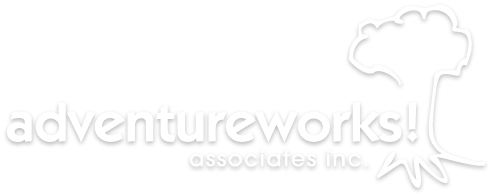Orientation, Training, and Certification: What’s the difference?
By Kathy Haras, Ph.D
With the spring weather, ropes courses are swinging back into operation – often with a combination of new and returning staff. As the course manager, you may be thinking that some sort of training is required. And indeed, the ACCT Standards require annual training for all staff as do most other standards affecting ropes course programs including OPHEA, TSSA, and all provincial camping associations. But have you also thought about your staff members’ needs for orientation? Or whether your organization might best be served by certification? Are you fuzzy about the difference among these terms? Here is some information to help get your ropes course season off to a great start.
Training. The term training refers to preparation or the learning of a skill or discipline, often specific to a job. The goals of training are to:
• Reinforce good knowledge and practices
• Correct misinformation and bad habits
• Provide hands-on experience
Anyone who will be working on a ropes course should receive training appropriate to their roles and responsibilities. Training is the time when core skills including facilitation, spotting, knot tying, belaying, set-up, working at height, and course rescue techniques are introduced and developed.
Certification. Staff members who are Certified Challenge Course Practitioners have undergone testing by an ACCT accredited body to verify that they meet or exceed a defined level of competence. Certification includes –
• Performance on a written test
• Practical Skills assessment
• Documentation of experience
• Attendance at specified training courses
• Minimum age requirements
Since certified staff members generally have a deeper and broader base of knowledge than uncertified staff, ensuring specialist ropes course staff are certified is both sensible and ensures that your organization meets provincial camping association and other standards.
Orientation. The goal of orientation is to introduce your Operating Procedures (LOPs) to your trained staff. Orientation is particularly important when you have experienced staff who are new to your site. To be effective, they will need to learn about your organization’s preferred way of doing things. Orientation should ensure that staff working at your program understand the specific procedures, techniques, and protocols which are to be used at your facility and in your program. For instance you will have specific procedures for the operation of your zip line which must be communicated to your staff. While orientation does not include skill performance, assessments, or evaluations, it does convey your site’s level of risk tolerance and should be attended by all staff who will be working on the ropes course.
Training teaches your staff to the core skills necessary to perform their responsibilities, Certification verifies their skills, and orientation ensures they understand your Local Operating Procedures (LOPs). Each achieve different goals yet are necessary components of an effective staffing plan for your ropes course. As you ramp up your ropes course operations for the spring, take the time to make sure your staffing plan includes all three.
If you would like assistance in developing the training plan for your program please contact us, we can help.


